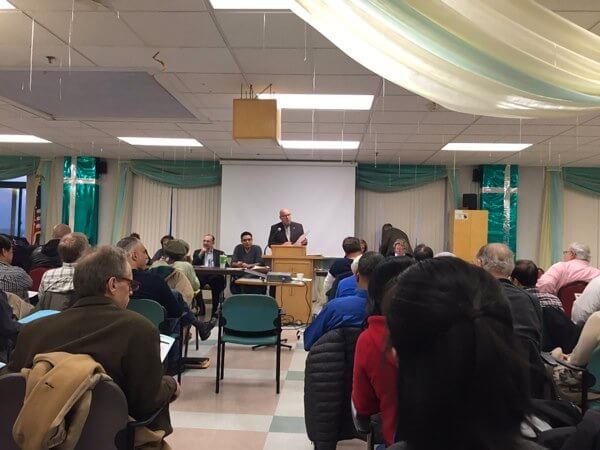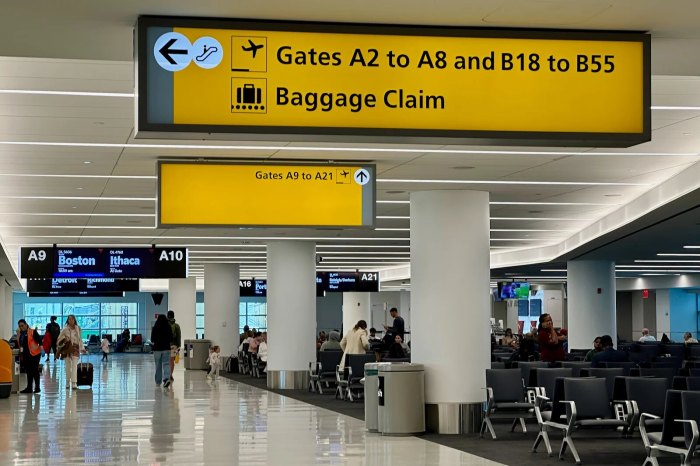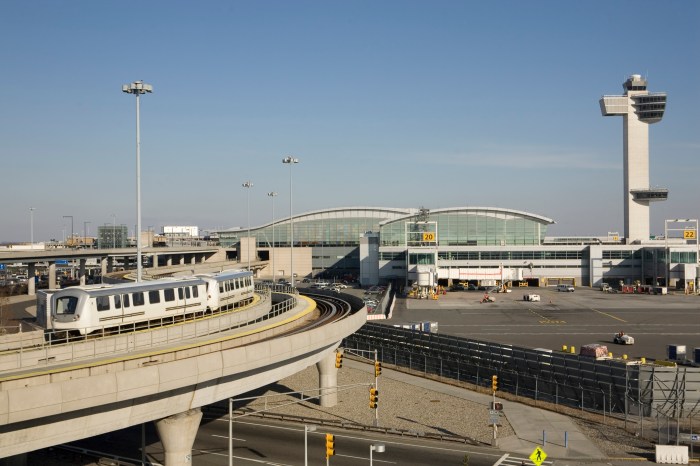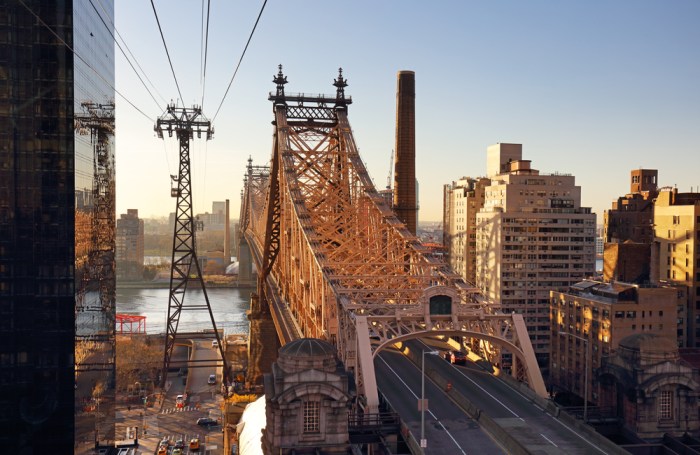By Gina Martinez
Community Board 7 members expressed their concerns over cashless tolling, which is set to being in the fall, at the Throgs Neck and Whitestone bridges at Monday’s meeting.
Joyce Mulvaney, director of community affairs at MTA Bridge and Tunnel, led the presentation outlining the Gov. Andrew Cuomo’s plan for cashless tolling. She said by the governor will announce the exact date cashless tolling would begin.
“Cashless tolling moves traffic, we know this.” she said. “There will be no more toll plaza, no more gates, no more EZPass or cash customers, and no more cash payments. You just drive through and you’re billed for the toll.”
As for the roadway, Mulvaney said construction will produce a little pain, especially during the installation of the gantry and equipment associated with electronic toll collection, but the MTA will do construction at the most opportune time to avoid traffic.
She also said EZPass customers will experience no change except the customer experience, which she said will improve.
“You won’t be stuck behind someone anymore,” she said. “Those cash lanes where you’re stuck and it bleeds over, it’s a thing of the past. It’s not to say that it’s a cure all for all of traffic, but at least in the toll plaza it will be. The benefits here we’re talking about is non stop traffic through the toll plaza, no more EZPass intervention or delays, waiting behind someone when the gate doesn’t go up. Safety is very important for us. There will be no more last minute merging in lanes, a great safety improvement, and, of course, the environmental benefits: no more idling, vehicles waiting behind EZPass vehicles.”
Community board members were most concerned about billing and people who avoid payments, but they were reassured that a system was in place to ensure that no one would get away with not paying tolls. The new system will send drivers an invoice by mail. Equipment on the bridge will take pictures of drivers’ license plates and send the information to the DMV and the registered owner of the car will be billed.
“The toll bill will function very similarly to a utility bill,” she said. “You will get your first toll bill 30 days after your first transaction, you then have 30 days in which to make payment. If payment is not received, you get a second bill in the mail requesting payment again. You then have another 30 days to make a payment. You have a variety of options in which to pay. You can go online, you can call and use our interactive voice response system, you can also submit payment by check in the mail, moneygram or visit one of our walk-in centers to make a payment.”
She said if a payment is not received after a driver is given two notices, a violation is issued to the driver and a fee. For people who are repeated violators, their registration can possibly be suspended. Drivers with out-of-state plates who repeatedly use tolling facilities and do not pay the toll bills will face summonses and other law enforcement measures could apply.
Community board members were also wondering if toll collectors would lose their jobs. Mulvaney said no one is getting fired but instead personnel will b redeployed.
“We are not laying off anyone,” she said. “No one is losing their jobs. We’re redeploying our bridge and tunnel officers or peace officers, toll collection is only one part of their duty so they’re being redeployed to go after drunk drivers, manage traffic among their many duties.”
Maloney also reassured community board members who were not convinced that enforcement was serious enough that people who do not pay their bills will face consequences.
“There is a suspension law,” she said. “Three violations within five years and your licence can be suspended, they can get stopped. We are going after those people. The governor is trying to step up enforcement and penalties.
Reach Gina Martinez by e-mail at gmart




































